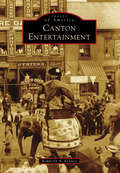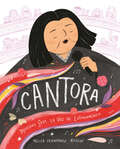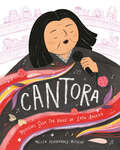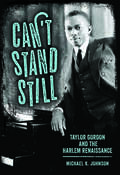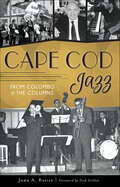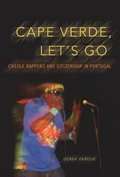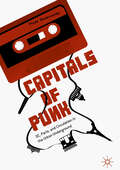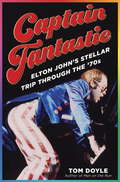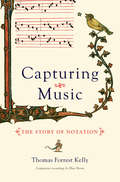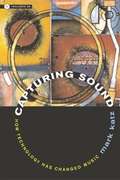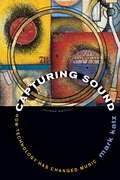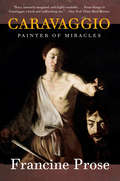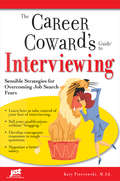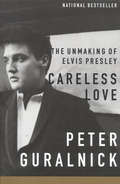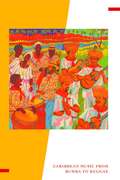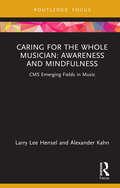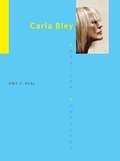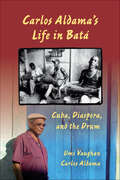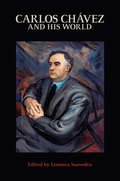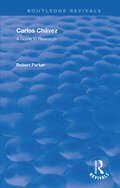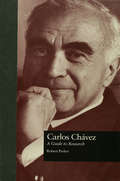- Table View
- List View
Cantar es mi mundo - Singen ist meine Welt: Spielräume zur Ermöglichung allgemeiner Bildungserfahrungen im Musikunterricht
by Stefan LückelStefan Lückel untersucht in der vorliegenden Arbeit, inwiefern im Kontext des vokalen Musizierens innerhalb des Musikunterrichtes der Sekundarstufen I und II - im Besonderen beim Singen - neben musikspezifischen auch allgemeine Bildungserfahrungen erzielt und nachgewiesen werden können. Grundlage dieser Untersuchung sind zunächst theoretische Vorüberlegungen zum allgemeinen und zum ästhetisch-musikalischen Bildungsbergriff sowie zum anderen eine Feldstudie, in der in Form einer musikpädagogisch-konzertierten Intervention verschiedene Kategorien Allgemeiner Bildung beobachtet und anschließend beschrieben werden. Hieraus entwickelt er eine musikdidaktische Konzeption (Didaktische Skizze), die theoretisch elaboriert und praxisbezogen eine didaktische Orientierung und Planungshilfe für Musiklehrer*innen bietet, unter welchen Bedingungen und in welcher Weise auch Erfahrungen und Kategorien Allgemeiner Bildung im Musikunterricht beim Singen erzielt werden können.
Canton Entertainment
by Kimberly A. KenneyEveryone loves to have fun! Over the years, Cantonians have enjoyed a wide variety of amusements, from traveling theatrical shows to community-wide celebrations. Louis Schaefer opened the town's first opera house in 1868, attracting some of the 19th century's biggest stars to Canton. The tradition of first-rate entertainment continued in the 20th century, with stars like Benny Goodman, Tommy Dorsey, and Guy Lombardo gracing the stage of the Moonlight Ballroom. During the Great Depression in the 1930s, Canton enjoyed a cultural renaissance with the development of many arts organizations still cherished today, including the Players' Guild, Canton Symphony Orchestra, and Canton Museum of Art. In 1955, the city celebrated its sesquicentennial with the biggest parade in Canton's history.
Cantora (Spanish Edition): Mercedes Sosa, la voz de Latinoamérica
by Melisa Fernández NitscheSing out! With a stunning, graphic style and a melodious text, this picture book tells the story of Latin American icon Mercedes Sosa and how she became the voice of a people from exile to triumph.What if a voice became a symbol of justice?I&’m here to offer my heart, said that voice.The folk rhythm of the bombo drum beats like a heart, with a resonant voice singing the truth of her people. Mercedes Sosa sang about what it means to be human, and her songs of struggle always spoke the truth of the injustice that so many workers and families in Latin America faced. As a teen, she won a local radio contest, and as her confidence grew, so did her fame. From a folk festival to Carnegie Hall and the Sistine Chapel, Mercedes performed the world over, sharing stories through song. But not everyone loved her singing: a military dictatorship ruled over Argentina, and they saw the power of her voice. Even from exile, Mercedes Sosa was a beacon of freedom for her people, and when she returned to her homeland, she persisted in her work: to be the voice of the voiceless.Adding a personal touch as a fellow Argentinean, Melisa Fernández Nitsche fills her debut picture book with bright and breathtaking illustrations that will surely inspire and empower young readers as they read about the impact one person's voice can have.
Cantora: Mercedes Sosa, the Voice of Latin America
by Melisa Fernández NitscheSing out! With a stunning, graphic style and a melodious text, this picture book tells the story of Latin American icon Mercedes Sosa and how she became the voice of a people from exile to triumph.What if a voice became a symbol of justice?I&’m here to offer my heart, said that voice.The folk rhythm of the bombo drum beats like a heart, with a resonant voice singing the truth of her people. Mercedes Sosa sang about what it means to be human, and her songs of struggle always spoke the truth of the injustice that so many workers and families in Latin America faced. As a teen, she won a local radio contest, and as her confidence grew, so did her fame. From a folk festival to Carnegie Hall and the Sistine Chapel, Mercedes performed the world over, sharing stories through song. But not everyone loved her singing: a military dictatorship ruled over Argentina, and they saw the power of her voice. Even from exile, Mercedes Sosa was a beacon of freedom for her people, and when she returned to her homeland, she persisted in her work: to be the voice of the voiceless.Adding a personal touch as a fellow Argentinean, Melisa Fernández Nitsche fills her debut picture book with bright and breathtaking illustrations that will surely inspire and empower young readers as they read about the impact one person's voice can have.
Can’t Be Faded: Twenty Years in the New Orleans Brass Band Game (American Made Music Series)
by Stooges Brass Band Kyle DeCosteThe Stooges Brass Band always had big dreams. From playing in the streets of New Orleans in the mid-1990s to playing stages the world over, they have held fast to their goal of raising brass band music and musicians to new heights—professionally and musically. In the intervening years, the band’s members have become family, courted controversy, and trained a new generation of musicians, becoming one of the city’s top brass bands along the way. Two decades after their founding, they have decided to tell their story. Can’t Be Faded: Twenty Years in the New Orleans Brass Band Game is a collaboration between musician and ethnomusicologist Kyle DeCoste and more than a dozen members of the Stooges Brass Band, past and present. It is the culmination of five years of interviews, research, and writing. Told with humor and candor, it’s as much a personal account of the Stooges’ careers as it is a story of the city’s musicians and, even more generally, a coming-of-age tale about black men in the United States at the turn of the twenty-first century. DeCoste and the band members take readers into the barrooms, practice rooms, studios, tour vans, and streets where the music is made and brotherhoods are shaped and strengthened. Comprised of lively firsthand accounts and honest dialogue, Can’t Be Faded is a dynamic approach to collaborative research that offers a sensitive portrait of the humans behind the horns.
Can’t Stand Still: Taylor Gordon and the Harlem Renaissance (Margaret Walker Alexander Series in African American Studies)
by Michael K. JohnsonBorn in 1893 into the only African American family in White Sulphur Springs, Montana, Emmanuel Taylor Gordon (1893–1971) became an internationally famous singer in the 1920s at the height of the Harlem Renaissance. With his musical partner, J. Rosamond Johnson, Gordon was a crucially important figure in popularizing African American spirituals as an art form, giving many listeners their first experience of black spirituals.Despite his fame, Taylor Gordon has been all but forgotten, until now. Michael K. Johnson illuminates Gordon’s personal history and his cultural importance to the legacy of the Harlem Renaissance, arguing that during the height of his celebrity, Gordon was one of the most significant African American male vocalists of his era. Gordon’s story—working in the White Sulphur Springs brothels as an errand boy, traveling the country in John Ringling’s private railway car, performing on vaudeville stages from New York to Vancouver to Los Angeles, performing for royalty in England, becoming a celebrated author with a best-selling 1929 autobiography, and his long bout of mental illness—adds depth to the history of the Harlem Renaissance and makes him one of the most fascinating figures of the twentieth century. Through detailed documentation of Gordon’s career—newspaper articles, reviews, letters, and other archival material—the author demonstrates the scope of Gordon’s cultural impact. The result is a detailed account of Taylor’s musical education, his career as a vaudeville performer, the remarkable performance history of Johnson and Gordon, his status as an in-demand celebrity singer and author, his time as a radio star, and, finally, his descent into madness. Can’t Stand Still brings Taylor Gordon back to the center of the stage.
Cape Cod Jazz: From Colombo to The Columns
by John A. BasileThe first notes of jazz hit Cape Cod in the very early days of the genre. Bournehurst-on-the-Canal hosted top bands, and emerging swing era dancers packed the hall. Cape Cod's "First Lady of Jazz," Marie Marcus, was a child prodigy in Boston and found some of her most important instruction in the art of stride piano during lessons with great pianist Fats Waller in New York. At the very tip of the Cape, the Atlantic House in Provincetown showcased performances from some of the biggest names like Gerry Mulligan, Billie Holiday and Stan Getz. Author John Basile details the fascinating history and amazing musicians that made Cape Cod a music destination.
Cape Verde, Let's Go: Creole Rappers and Citizenship in Portugal
by Derek PardueMusicians rapping in kriolu --a hybrid of Portuguese and West African languages spoken in Cape Verde--have recently emerged from Lisbon's periphery. They popularize the struggles with identity and belonging among young people in a Cape Verdean immigrant community that shares not only the kriolu language but its culture and history. Drawing on fieldwork and archival research in Portugal and Cape Verde, Derek Pardue introduces Lisbon's kriolu rap scene and its role in challenging metropolitan Portuguese identities. Pardue demonstrates that Cape Verde, while relatively small within the Portuguese diaspora, offers valuable lessons about the politics of experience and social agency within a postcolonial context that remains poorly understood. As he argues, knowing more about both Cape Verdeans and the Portuguese invites clearer assessments of the relationship between the experience and policies of migration. That in turn allows us to better gauge citizenship as a balance of individual achievement and cultural ascription. Deftly shifting from domestic to public spaces and from social media to ethnographic theory, Pardue describes an overlooked phenomenon transforming Portugal, one sure to have parallels in former colonial powers across twenty-first-century Europe.
Capitals of Punk: DC, Paris, and Circulation in the Urban Underground
by Tyler SonnichsenCapitals of Punk tells the story of Franco-American circulation of punk music, politics, and culture, focusing on the legendary Washington, DC hardcore punk scene and its less-heralded counterpart in Paris. This book tells the story of how the underground music scenes of two major world cities have influenced one another over the past fifty years. This book compiles exclusive accounts across multiple eras from a long list of iconic punk musicians, promoters, writers, and fans on both sides of the Atlantic. Through understanding how and why punk culture circulated, it tells a greater story of (sub)urban blight, the nature of counterculture, and the street-level dynamics of that centuries-old relationship between France and the United States.
Captain Fantastic: Elton John's Stellar Trip Through the '70s
by Tom DoyleBased on rare one-on-one interviews with the flamboyant rock ’n’ roll icon, this is the first book to trace Elton John’s meteoric rise from obscurity to worldwide celebrity in the wildest, weirdest decade of the twentieth century. In August 1970, Elton John achieved overnight fame with a rousing performance at the Troubadour in Los Angeles. Over the next five years, the artist formerly known as Reginald Dwight went from unheard of to unstoppable, scoring seven consecutive #1 albums and sixteen Top Ten singles in America. By the middle of the decade, he was solely responsible for 2 percent of global record sales. One in fifty albums sold in the world bore his name. Elton John’s live shows became raucous theatrical extravaganzas, attended by all the glitterati of the era. But beneath the spangled bodysuits and oversized eyeglasses, Elton was a desperately shy man, conflicted about his success, his sexuality, and his narcotic indulgences. In 1975, at the height of his fame, he attempted suicide. After coming out as bisexual in a controversial Rolling Stone interview that nearly wrecked his career, and announcing his retirement from live performance in 1977 at the age of thirty, he gradually found his way back to the thing he cared about most: the music. Captain Fantastic gives readers a behind-the-scenes look at the rise, fall, and return to glory of one of the world’s most mercurial performers. Rock journalist Tom Doyle’s insider account of the Rocket Man’s turbulent ascent is based on a series of one-pn-one interviews in which Elton laid bare many previously unrevealed details of his early career. Here is an intimate exploration of Elton’s working relationship with songwriting partner Bernie Taupin, whose lyrics often chronicled the ups and downs of their life together in the spotlight. Through these pages pass a parade of legends whose paths crossed with Elton’s during the decade—including John Lennon, Bob Dylan, Groucho Marx, Katharine Hepburn, Princess Margaret, Elvis Presley, and an acid-damaged Brian Wilson. A fascinating portrait of the artist at the apex of his celebrity, Captain Fantastic takes us on a rollicking fame-and-drug-fueled ride aboard Elton John’s rocket ship to superstardom.
Capturing Music: The Story Of Notation
by Thomas Forrest KellyAn entertaining history of how musicians learned to record music for all time, filled with art that sings. In today’s digital landscape, we have the luxury of experiencing music anytime, anywhere. But before this instant accessibility and dizzying array of formats—before CDs, the eight-track tape, the radio, and the turntable—there was only one recording technology: music notation. It allowed singers and soloists to travel across great distances and perform their work with stunning fidelity, a feat that we now very much take for granted. Thomas Forrest Kelly transports us to the lively and complex world of monks and monasteries, of a dove singing holy chants into the ear of a saint, and of bustling activity in the Cathedral of Notre Dame—an era when the only way to share even the simplest song was to learn it by rote, church to church and person to person. With clarity and a sense of wonder, Kelly tells a story that spans five hundred years, leading us on a journey through medieval Europe and showing how we learned to keep track of rhythm, melody, and precise pitch with a degree of accuracy previously unimagined. Kelly reveals the technological advances that led us to the system of notation we use today, placing each step of its evolution in its cultural and intellectual context. Companion recordings by the renowned Blue Heron ensemble are paired with vibrant illuminated manuscripts, bringing the art to life and allowing readers to experience something of the marvel that medieval writers must have felt when they figured out how to capture music for all time.
Capturing Sound: How Technology Has Changed Music
by Mark KatzMark Katz explores how recording technology has encouraged new ways of listening to music, led performers to change their practices, and allowed entirely new musical genres to come into existence.
Capturing Sound: How Technology Has Changed Music
by Mark KatzThere is more to sound recording than just recording sound. Far from being simply a tool for the preservation of music, the technology is a catalyst. In this award-winning text, Mark Katz provides a wide-ranging, deeply informative, consistently entertaining history of recording's profound impact on the musical life of the past century, from Edison to the Internet. Fully revised and updated, this new edition adds coverage of mashups and Auto-Tune, explores recent developments in file-sharing, and includes an expanded conclusion and bibliography. Illustrative sound and film clips can be found on the Media tab of the www.ucpress.edu product page.
Caravaggio: Painter of Miracles (Eminent Lives)
by Francine Prose“Matching gorgeous prose to gorgeous artworks, Prose responds to each image as a moment of theatrical revelation, sensual or spiritual, and frequently both.” — Boston Sunday GlobeIn Caravaggio, New York Times bestselling author Francine Prose offers an enthralling account of the life and work of one of the greatest painters of all time. Caravaggio defied the aesthetic conventions of his time; his use of ordinary people, realistically portrayed—street boys, prostitutes, the poor, the aged—was a profound and revolutionary innovation that left its mark on generations of artists. His insistence on painting from nature, on rendering the emotional truth of experience, whether religious or secular, made him an artist who speaks across the centuries to modern day. Called “racy, intensely imagined, and highly readable” by the New York Times Book Review, Caravaggio includes eight pages of color illustrations, and is sure to appeal to art enthusiasts interested in one of history’s true innovators. Caravaggio is part of the “Eminent Lives” series from HarperCollins, a selection of biographies by distinguished authors on canonical figures
Career Coward's Guide to Interviewing
by Katy PiotrowskiHelps readers sell their qualifications without "bragging," develop courageous responses to tough questions, and have the guts to ask for a better salary offer.
Careless Love: The Unmaking of Elvis Presley
by Peter GuralnickCareless Love is the full, true, and mesmerizing story of Elvis Presley's last two decades, in the long-awaited second volume of Peter Guralnick's masterful two-part biography.Last Train to Memphis, the first part of Guralnick's two-volume life of Elvis Presley, was acclaimed by the New York Times as "a triumph of biographical art." This concluding volume recounts the second half of Elvis' life in rich and previously unimagined detail, and confirms Guralnick's status as one of the great biographers of our time.Beginning with Presley's army service in Germany in 1958 and ending with his death in Memphis in 1977, Careless Love chronicles the unravelling of the dream that once shone so brightly, homing in on the complex playing-out of Elvis' relationship with his Machiavellian manager, Colonel Tom Parker. It's a breathtaking revelatory drama that for the first time places the events of a too-often mistold tale in a fresh, believable, and understandable context.Elvis' changes during these years form a tragic mystery that Careless Love unlocks for the first time. This is the quintessential American story, encompassing elements of race, class, wealth, sex, music, religion, and personal transformation. Written with grace, sensitivity, and passion, Careless Love is a unique contribution to our understanding of American popular culture and the nature of success, giving us true insight at last into one of the most misunderstood public figures of our times.
Caribbean Currents: Caribbean Music from Rumba to Reggae (Studies In Latin America And Car)
by Peter Manuel Michael LargeyFirst published in 1995, Caribbean Currents has become the definitive guide to the distinctive musics of this region of the world. This third edition of the award-winning book is substantially updated and expanded, featuring thorough coverage of new developments, such as the global spread of reggaeton and bachata, the advent of music videos, the restructuring of the music industry, and the emergence of new dance styles. It also includes many new illustrations and links to accompanying video footage. <P><P> The authors succinctly and perceptively situate the musical styles and developments in the context of themes of gender and racial dynamics, sociopolitical background, and diasporic dimensions. Caribbean Currents showcases the rich and diverse musics of Cuba, Puerto Rico, the Dominican Republic, Jamaica, Trinidad, the French Caribbean, the lesser Antilles, and their transnational communities in the United States and elsewhere to provide an engaging panorama of this most dynamic aspect of Caribbean culture.
Caring for the Whole Musician: CMS Emerging Fields in Music (CMS Emerging Fields in Music)
by Larry Lee Hensel Alexander KahnCaring for the Whole Musician brings together insights from two expert musicians and educators to consider the relationship between mental and physical health and artistic practice for musicians. Offering a holistic perspective that encompasses the whole being – body, mind, and heart – this book provides emerging musicians with tools, practices, and mindsets to address key challenges throughout their journey. The first part, Awareness, addresses wellness and embodiment in music, exploring how our bodies are constructed and how the use of our bodies as instruments affects function. Using approaches including Body Mapping and the Alexander Technique, this part helps readers discover adverse habits that interfere with natural movement, and nurture awareness of the body. The second part, Mindfulness, explores how meditative practice can be incorporated into every stage of concert preparation and embedded within the daily life of the musician. Offering mindfulness exercises related to each stage of the music-making process, these chapters provide strategies for readers to enhance their well-being and focus. Centered in the understanding of the musician as a whole being, this book provides an essential guide to how practices of awareness and mindfulness can allow musicians to better care for themselves and flourish in their artistic careers.
Caring for the Whole Musician: CMS Emerging Fields in Music (CMS Emerging Fields in Music)
by Larry Lee Hensel Alexander KahnCaring for the Whole Musician brings together insights from two expert musicians and educators to consider the relationship between mental and physical health and artistic practice for musicians. Offering a holistic perspective that encompasses the whole being – body, mind, and heart – this book provides emerging musicians with tools, practices, and mindsets to address key challenges throughout their journey.The first part, Awareness, addresses wellness and embodiment in music, exploring how our bodies are constructed and how the use of our bodies as instruments affects function. Using approaches including Body Mapping and the Alexander Technique, this part helps readers discover adverse habits that interfere with natural movement, and nurture awareness of the body. The second part, Mindfulness, explores how meditative practice can be incorporated into every stage of concert preparation and embedded within the daily life of the musician. Offering mindfulness exercises related to each stage of the music-making process, these chapters provide strategies for readers to enhance their well-being and focus.Centered in the understanding of the musician as a whole being, this book provides an essential guide to how practices of awareness and mindfulness can allow musicians to better care for themselves and flourish in their artistic careers.
Carl Perkins: The King of Rockabilly
by Jeff ApterThe definitive and fascinating biography of the musical trailblazer who was the influence behind countless legendary hits, a rock and roll legend in his own right, and the original rockabilly cat—Carl Perkins. He was the King of Rockabilly, and one of rock and roll&’s true pioneers. A groundbreaking guitarist, singer, and songwriter, Carl Perkins inspired countless musicians in country, rock, and pop music. As Paul McCartney said, &“If there were no Carl Perkins, there would be no Beatles.&” One Beatle was such a fan that he gave himself the stage name Carl Harrison. Now acclaimed music writer Jeff Apter recounts Carl&’s remarkable life story—the triumphs, tragedies, and career highlights that include some of the most pivotal moments in music history. Born in Tennessee to poor sharecroppers, Carl grew up listening to gospel and country music, learned blues guitar from a fellow field hand, and started writing songs at age fourteen. He plied his trade in rough and rowdy honky-tonks, performing with his brothers before beginning his recording career at the legendary Sun Studio in Memphis. It was there that Carl became a member of the fabled &“Million Dollar Quartet,&” alongside Elvis Presley, Johnny Cash, and Jerry Lee Lewis. In 1955, he wrote and recorded &“Blue Suede Shoes,&” the first record by a Sun artist to sell over a million copies. But then a fateful car crash stalled his career, one of many tragedies in his life. Over the following decades, Presley, Cash, and countless other artists, from the Beatles, Tom Petty, and Bob Dylan to Eric Clapton and Jimi Hendrix, performed and recorded his songs and became Carl&’s friends, collaborators, and champions. Rich with insider detail and background into Carl&’s private battles, humanitarian work, and personal inspirations, this is a fascinating, in-depth look at &“Mr. Blue Suede Shoes&” and his one-of-a-kind legacy.
Carla Bley
by Amy C. BealThis is the first comprehensive treatment of the remarkable music and influence of Carla Bley, a highly innovative American jazz composer, pianist, organist, band leader, and activist. With fastidious attention to Bley's diverse compositions over the last fifty years spanning critical moments in jazz and experimental music history, Amy C. Beal tenders a long-overdue representation of a major figure in American music. Best known for her jazz opera "Escalator over the Hill," her role in the Free Jazz movement of the 1960s, and her collaborations with artists such as Jack Bruce, Don Cherry, Robert Wyatt, and Pink Floyd drummer Nick Mason, Bley has successfully maneuvered the field of jazz from highly accessible, tradition-based contexts to commercially unviable, avant-garde works. Beal details the staggering variety in Bley's work as well as her use of parody, quotations, and contradictions, examining the vocabulary Bley has developed throughout her career and highlighting the compositional and cultural significance of her experimentalism. Beal also points to Bley's professional and managerial work as a pioneer in the development of artist-owned record labels, the cofounder and manager of WATT Records, and the cofounder of New Music Distribution Service. Showing her to be not just an artist but an activist who has maintained musical independence and professional control amid the profit-driven, corporation-dominated world of commercial jazz, Beal's straightforward discussion of Bley's life and career will stimulate deeper examinations of her work.
Carlos Aldama's Life in Batá: Cuba, Diaspora, and the Drum
by Umi Vaughan Carlos AldamaBatá identifies both the two-headed, hourglass-shaped drum of the Yoruba people and the culture and style of drumming, singing, and dancing associated with it. This book recounts the life story of Carlos Aldama, one of the masters of the batá drum, and through that story traces the history of batá culture as it traveled from Africa to Cuba and then to the United States. For the enslaved Yoruba, batá rhythms helped sustain the religious and cultural practices of a people that had been torn from its roots. Aldama, as guardian of Afro-Cuban music and as a Santería priest, maintains the link with this tradition forged through his mentor Jesus Pérez (Oba Ilu), who was himself the connection to the preserved oral heritage of the older generation. By sharing his stories, Aldama and his student Umi Vaughan bring to light the techniques and principles of batá in all its aspects and document the tensions of maintaining a tradition between generations and worlds, old and new. The book includes rare photographs and access to downloadable audio tracks.
Carlos Chavez and His World
by Leonora SaavedraCarlos Chávez (1899-1978) is the central figure in Mexican music of the twentieth century and among the most eminent of all Latin American modernist composers. An enfant terrible in his own country, Chávez was an integral part of the emerging music scene in the United States in the 1920s. His highly individual style--diatonic, dissonant, contrapuntal--addressed both modernity and Mexico's indigenous past. Chávez was also a governmental arts administrator, founder of major Mexican cultural institutions, and conductor and founder of the Orquesta Sinfónica de México. Carlos Chávez and His World brings together an international roster of leading scholars to delve into not only Chávez's music but also the history, art, and politics surrounding his life and work.Contributors explore Chávez's vast body of compositions, including his piano music, symphonies, violin concerto, late compositions, and Indianist music. They look at his connections with such artistic greats as Aaron Copland, Miguel Covarrubias, Henry Cowell, Silvestre Revueltas, and Paul Strand. The essays examine New York's modernist scene, Mexican symphonic music, portraits of Chávez by major Mexican artists of the period, including Diego Rivera and Rufino Tamayo, and Chávez's impact on El Colegio Nacional. A quantum leap in understanding Carlos Chávez and his milieu, this collection will stimulate further work in Latin American music and culture.The contributors are Ana R. Alonso-Minutti, Amy Bauer, Leon Botstein, David Brodbeck, Helen Delpar, Christina Taylor Gibson, Susana González Aktories, Anna Indych-López, Roberto Kolb-Neuhaus, James Krippner, Rebecca Levi, Ricardo Miranda, Julián Orbón, Howard Pollack, Leonora Saavedra, Antonio Saborit, Stephanie Stallings, and Luisa Vilar Payá.Bard Music Festival 2015:Carlos Chávez and His WorldBard CollegeAugust 7-9 and August 14-16, 2015
Carlos Chavez: A Guide to Research
by Robert L. ParkerFirst Published in 1998.The purpose of this volume is to list as completely as possible Chávez’s compositions, which number close to two hundred works, and to present a digest of selected literature germane to his multi-faceted professional activity. This literature, which began in the 1920s and continues to grow, is almost entirely in Spanish and English, reflecting the main arenas in which he worked—Mexico, other Hispanic language countries, the United States, and England. Each research guide offers a selective, annotated list of writings, in all European languages, about one or more composers. There are also lists of works by the composer, unless these are available elsewhere. Biographical sketches and guides to library resources, organizations, and specialists are presented. As appropriate to the individual composer, there are maps, photographs, or other illustrative matter, glossaries, and indexes.
Carlos Chavez: A Guide to Research (Routledge Music Bibliographies)
by Robert L. ParkerThis book is the first extensive guide to the life, music, and writings of Carlos Ch vez (1899-1978), Mexico's most influential musician of the 20th century. The chapter on biography also presents a characterization of his compositional styles. This work provides a comprehensive listing of Ch vez's compositions and arrangements by genre and performance medium, and reviews the composer's own abundant writings on a broad range of musical subjects. Subsequent chapters address other authors' writings about his multi-faceted career as composer, conductor, teacher, and arts administrator that contributed to his international reputation. A chapter on Research Aids includes annotations of pertinent general reference works, catalogs, and collections of letters that will assist both the general reader and the music specialist.Introductory narratives illuminate the bibliographic entries in each section, and cross references facilitate access to literature that extends beyond a single relevant topic. The book includes three indexes, which cover compositions and arrangements, authors and titles, and subjects.

